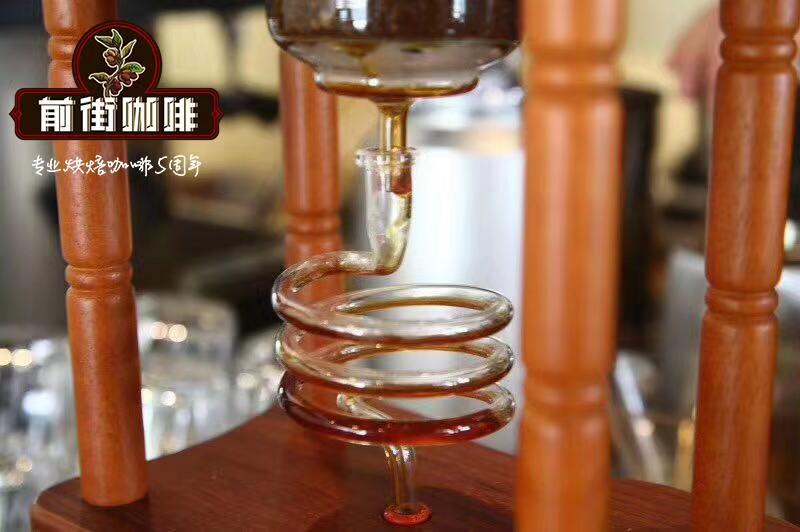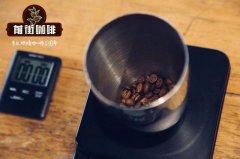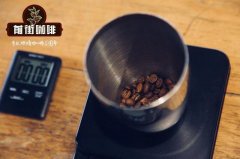What is the best coffee in Kenya? a brief introduction to the flavor characteristics of hand-brewed coffee

Professional coffee knowledge exchange more coffee bean information please follow the coffee workshop (Wechat official account cafe_style)
Qianjie-Kenya Coffee, brewing parameters sharing
Kenya is an important force in East Africa in the coffee world, and it is a leader in both its coffee quality and its business strategy. The excellent coffee produced here has a clear, bright and rising flavor throughout the front and back of the tongue. The flavor is complex and rich, with very interesting fruit flavors (berries, citrus) and even spicy flavors. Clean, bright, rare wine (grapefruit) quality. Usually excellent Kenyan coffee is not sold as a simple AA or AB, it will participate in various coffee auctions in Kenya, and only the highest bidder can win the bid. The producing areas attach great importance to variety research, planting improvement, improving farmers' cultivation skills and so on.
The method of grading beans varies slightly from place to place. While KENYA uses sieve size as the standard and combines density and shape to classify coffee, what are the grades of KENYA?
KENYA coffee is graded as E-PB-AA-AB-C-TT-T-MH/ML.
E: the screen size is more than 18, which is called "Elephant Bean". Two face-to-face two seeds merged into one, suddenly mutated beans.
PB: it is also included in Kenya E, commonly known as peaberry.
AA: the sieve size is 1700cm, 18cm, 1400m and 2000m, which is the largest size of normal raw beans.
AB: a mix of screen size 1516, grade A (screen size 1617) and grade B (screen size 1516).
C: the size of the screen is 1415, which is lower than the density of grade AB.
TT: sieve size 15 to 17, bean size similar to AA~AB, but low density.
T: broken, defective or small beans with sieve size less than 12.
MH/ML: beans that fall by themselves due to overripening before harvest. Among them, the heavy ones are MH grades (MassHeavy) and the light ones are ML grades (Mass Light).
Kenya does not have pure native varieties like Ethiopia, but after a rigorous variety selection system and scientific and meticulous hybrid improvement, Kenyan coffee beans are equally outstanding, such as SL28/SL34, Kenya's top coffee comes from these two varieties. Interestingly, the bean reaped its distinctive Kenyan flavor.
The front street players rushed to share.
Kenya Kiamaina AB
Planting area: Nyeri
Cooperative: Kiama Cooperative
Processing plant: Kiamaina
Bean seed: SL28, SL34
Treatment: washing
Flavor description: citrus, passion fruit, maple leaf syrup
The ratio of powder to water is 1:15, the water temperature of grinding degree BG-6S is 91 °30g and steaming for 30s, and the second stage water injection is cut off to 120g. When the water level drops to about to expose the powder bed, the third water injection is carried out, and the water injection is cut off to 225g. The filter cup is removed when the water level is about to be exposed, and the extraction time is 2 minutes.
Gift of knowledge: the same African beans, unlike Ethiopia's fresh and soft acid, Kenya is bright and sour, and it also has the full sweetness of ripe fruit, like a refreshing plum candy.
END
Important Notice :
前街咖啡 FrontStreet Coffee has moved to new addredd:
FrontStreet Coffee Address: 315,Donghua East Road,GuangZhou
Tel:020 38364473
- Prev

How about Kenya's deep-roasted coffee? which country in Africa has the best coffee?
Professional coffee knowledge exchange more coffee bean information please follow the coffee workshop (Wechat official account cafe_style) front street-African coffee countries-Kenya Coffee brief introduction all coffee birthplace. Due to the geographical location and environment of the African continent, the coffee beans here are very friendly to the sun treatment, of course, there are also water washing treatment; Ethiopian coffee orange fragrance
- Next

Where is the best coffee in the world? what is the ranking of Jamaican Blue Mountain Coffee?
Professional coffee knowledge exchange more coffee bean information please follow the coffee workshop (Wechat official account cafe_style) Front Street-Jamaica Blue Mountain Coffee brief introduction Coffee varies from different places, different varieties, different flavors. Coffee in the same area will be picked in different ways and roasted in different ways, and the taste of the coffee will be completely different. Same
Related
- Beginners will see the "Coffee pull flower" guide!
- What is the difference between ice blog purified milk and ordinary milk coffee?
- Why is the Philippines the largest producer of crops in Liberia?
- For coffee extraction, should the fine powder be retained?
- How does extracted espresso fill pressed powder? How much strength does it take to press the powder?
- How to make jasmine cold extract coffee? Is the jasmine + latte good?
- Will this little toy really make the coffee taste better? How does Lily Drip affect coffee extraction?
- Will the action of slapping the filter cup also affect coffee extraction?
- What's the difference between powder-to-water ratio and powder-to-liquid ratio?
- What is the Ethiopian local species? What does it have to do with Heirloom native species?

